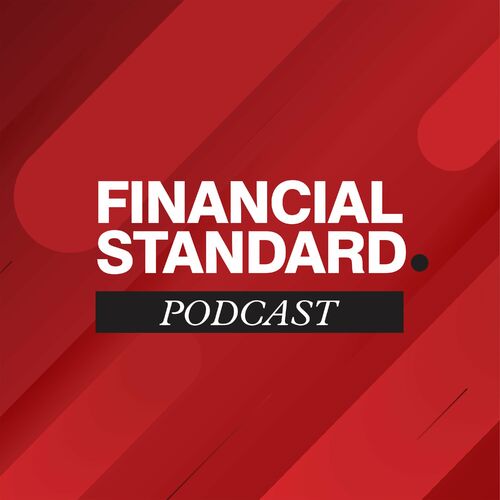The Role of CDNs in Financial Services: A Look at Fastly’s Offerings

Introduction

Content delivery networks (CDNs) play a vital role in the financial services industry by providing fast and reliable delivery of critical information to customers and employees. Fastly is a leading CDN provider that offers a range of financial services-specific solutions.

Fastly’s Offerings for Financial Services
Fastly provides a comprehensive suite of services designed to meet the unique needs of financial institutions:
1. Fast CDN: Fastly’s CDN delivers web and application content with lightning-fast speeds and low latency. This enhances the user experience and reduces load times for trading platforms, banking portals, and other critical applications.
2. Media Streaming: Fastly’s video streaming solutions enable financial institutions to securely and efficiently deliver live and on-demand video content to customers and employees. This is essential for webinars, investor presentations, and training materials.
3. Streaming Analytics: Fastly’s analytics platform provides real-time insights into CDN performance, content consumption, and user behavior. This data helps financial institutions optimize their content delivery strategy and identify areas for improvement.
4. Security Solutions: Fastly offers a range of security features, including DDoS protection, web application firewall (WAF), and API security. This ensures that financial institutions’ websites and applications are protected from malicious attacks.
Benefits of Using Fastly’s Services
Financial institutions can derive several benefits from using Fastly’s services:
1. Improved Customer Experience: By accelerating content delivery, Fastly reduces load times and improves user satisfaction. This leads to increased conversion rates and customer loyalty.
2. Increased Operational Efficiency: Fastly’s platform streamlines content management and distribution, freeing up IT resources to focus on core business functions.
3. Reduced Latency: Fastly’s global network of edge servers reduces latency and ensures fast access to data for users worldwide. This is critical for applications that require real-time processing, such as trading platforms.
4. Enhanced Security: Fastly’s security features provide robust protection against cyber threats. This helps financial institutions maintain compliance with regulatory requirements and safeguard customer data.
Case Studies
1. Global Investment Bank: A leading global investment bank used Fastly to improve the performance of its trading platform. Fastly’s CDN reduced page load times by 60%, resulting in a significant increase in trade volume and revenue.
2. Insurance Provider: A major insurance provider deployed Fastly’s video streaming solution to deliver training materials to its agents. Fastly’s platform ensured reliable streaming with low latency, improving employee efficiency and customer service.
Conclusion
CDNs are essential for financial services companies that seek to deliver fast, reliable, and secure content to their customers and employees. Fastly’s comprehensive offerings provide financial institutions with the tools they need to enhance user experience, increase operational efficiency, and maintain security. By leveraging Fastly’s services, financial institutions can stay ahead of the competition and meet the evolving needs of their customers in the digital age.## [The Role of CDNs in Financial Services: A Look at Fastly’s Offerings]
Executive Summary
Content delivery networks (CDNs) play a vital role in the delivery of financial services by providing fast, reliable, and secure access to data and applications. This article explores the value of CDNs in financial services and examines the offerings of Fastly, a leading CDN provider, detailing how its solutions can enhance the user experience, improve performance, and strengthen security for financial institutions.
Introduction
In the fast-paced and demanding world of financial services, businesses rely on digital platforms to provide seamless experiences for customers. CDNs have emerged as essential components to ensure that online banking, trading, and other financial transactions are delivered quickly, reliably, and securely.
FAQs
-
What is a CDN? A CDN is a distributed network of servers that helps deliver content from websites and applications to users faster and more efficiently.
-
How can CDNs benefit financial services? CDNs enhance user experience, improve performance, and strengthen security by reducing latency, increasing reliability, and protecting against cyber threats.
-
Why choose Fastly? Fastly offers a range of CDN solutions tailored for financial services, including high-performance edge computing, network security services, and support for complex financial protocols.
Top 5 Subtopics
1. Faster Content Delivery
- Reduces latency: CDNs cache content closer to users, reducing the distance data needs to travel and delivering faster page load times.
- Accelerates application performance: CDNs optimize network routes and use advanced caching techniques to improve the responsiveness of web applications.
- Enhances user experience: Faster content delivery and application performance lead to improved website performance and reduced abandonment rates.
2. Increased Reliability
- Reduces downtime: CDNs provide redundancy and automatic failover mechanisms to ensure continuous availability of financial services applications.
- Protects against outages: CDNs distribute content across multiple servers, reducing the impact of single-point failures and ensuring continuity of business operations.
- Improves customer satisfaction: Consistent uptime and reliable access to financial services enhance customer confidence and prevent revenue loss.
3. Enhanced Security
- Protects against web attacks: CDNs block malicious traffic, filter out suspicious requests, and detect and mitigate threats before they reach financial services applications.
- Complies with regulatory standards: CDNs help financial institutions meet data protection and privacy compliance requirements.
- Strengthens cybersecurity posture: CDNs provide additional layers of security and can help financial institutions protect against financial fraud and data breaches.
4. Scalability and Flexibility
- Handles traffic spikes: CDNs can seamlessly scale to handle sudden increases in traffic, ensuring that financial services applications remain responsive during peak periods.
- Adapts to dynamic content: CDNs support the delivery of complex and dynamic financial content, such as real-time market data and personalized investment recommendations.
- Provides global reach: CDNs deliver content to users around the world, supporting financial institutions with global operations.
5. Cost Optimization
- Reduces bandwidth costs: CDNs cache content closer to users, reducing the amount of data that needs to be transferred over long distances.
- Optimizes infrastructure: CDNs can replace expensive on-premise solutions, reducing the need for hardware and maintenance costs.
- Improves return on investment: Fastly’s CDN solutions are cost-effective and provide a high return on investment by improving performance, security, and user satisfaction.
Conclusion
CDNs are indispensable components of financial services, enabling financial institutions to deliver fast, reliable, and secure online experiences. By choosing a leading CDN provider like Fastly, financial institutions can harness the power of edge computing, network security services, and tailored solutions to enhance customer satisfaction, improve operational efficiency, and strengthen their cybersecurity posture.
Keyword Tags
- Content Delivery Networks (CDNs)
- Financial Services
- Fastly
- Performance Optimization
- Security

